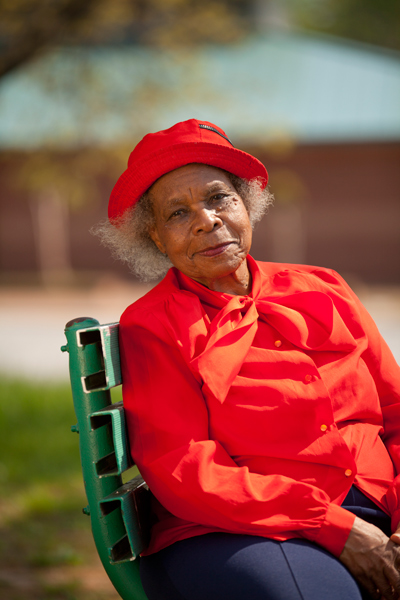 Almost everyone I’d interviewed for the Selena Butler Park story had mentioned her. She was clearly famous in that little corner of Atlanta. And every reference to Helene Mills was quickly followed up by a smile, a nod, and an “Oh yes, you must talk with Ms. Mills!”
Almost everyone I’d interviewed for the Selena Butler Park story had mentioned her. She was clearly famous in that little corner of Atlanta. And every reference to Helene Mills was quickly followed up by a smile, a nod, and an “Oh yes, you must talk with Ms. Mills!”
I was told in advance that she would not be easy to get a hold of. The 80-something-year-old juggles a full schedule of meetings, interviews, senior center visits, and assorted community-oriented activities. But somehow I managed to get onto her calendar. “Just wait. You are going to love talking to her,” remarked Jay Tribby, the city council member advisor who made the introduction.
When we began our phone interview that morning, I could see right away that I was conversing with someone equal parts activist, orator, local historian, and community advocate. Her clear, clipped syllables and carefully chosen words testified to her experience as a communicator. And her emphasis on the freedoms and privileges denied her parents influenced all her reflections on her own activism.
She does not wait to be invited to public meetings on issues that affect her, she told me, because she knows it is her job to find out and simply go. And she spreads the word to others affected by proposed changes in the community because she is free to do so. Free to speak, to share, and to advocate.
“People don’t always want to know my opinion,” she laughs, “but I always do have one.”
Helene Mills embraced the initiative to rebuild Selena Butler Park not because she sees her calling as that of park advocate. She is championing the effort because that neighborhood park is just one of many pieces in the rich patchwork that makes up the community she loves. And because she knows what it could mean to the quality of life for those who live close by. In that respect, Helene Mills is a lot like all the others who have fought to rebuild the park as one of many revitalization efforts.
The difference lies in her sense of history. When Helene Mills sees that fenced-off park, she thinks of the Yonge St. Elementary School that once stood right by the site before there ever was a park there. It was the place where Martin Luther King Jr. began his schooling. And it was also the school where, under the leadership of Selena Sloan Butler, African-American mothers began advocating formally for their children’s education. Helene Mills looks at the park and remembers when it was opened in the 1960s—and of the hopes that were eclipsed when it became a drug-dealing outpost soon after. She thinks of the time when the abandoned houses around her in the 1990s dominated so much of her time and attention that little energy remained for dreams of a vibrant public space. And, always, she says, she thinks of the children she watched grow up who eventually came to mark out their turf as crack dealers in Selena Butler Park.
Helene Mills is, like all the other stakeholders in that Atlanta neighborhood, interested in an improved quality of life, opportunities for recreation, and a richer sense of community. The difference is, Ms. Mills knows best of all how a piece of land in the middle of the city can be intricately connected with personal freedoms. And how much careful guardianship both the little piece of land and the larger freedoms require.
Maureen Hannan is the Senior Editor for Parks & Recreation magazine.

